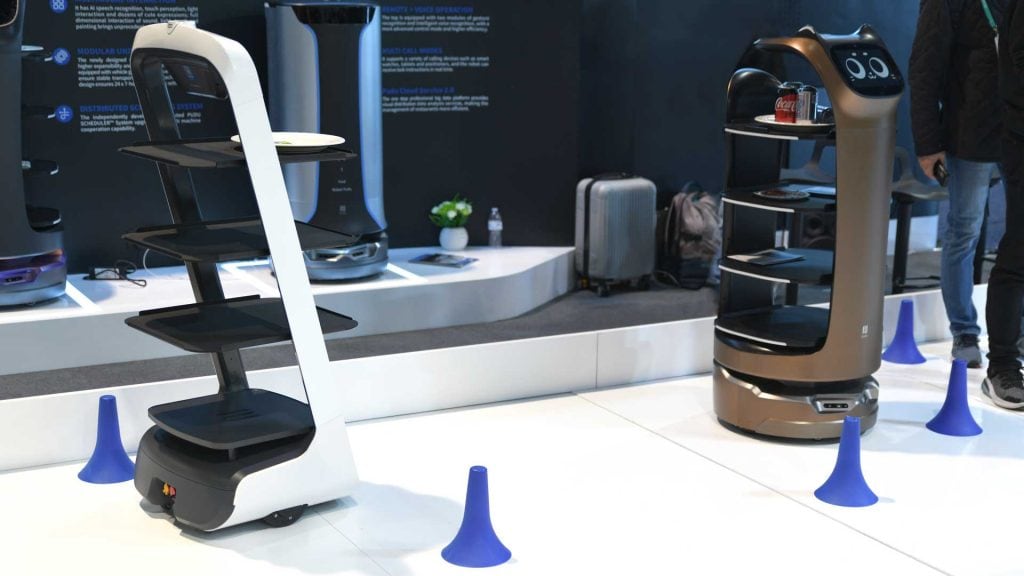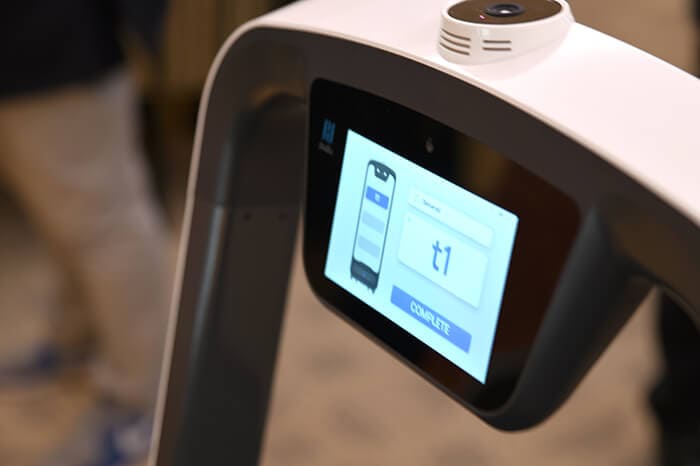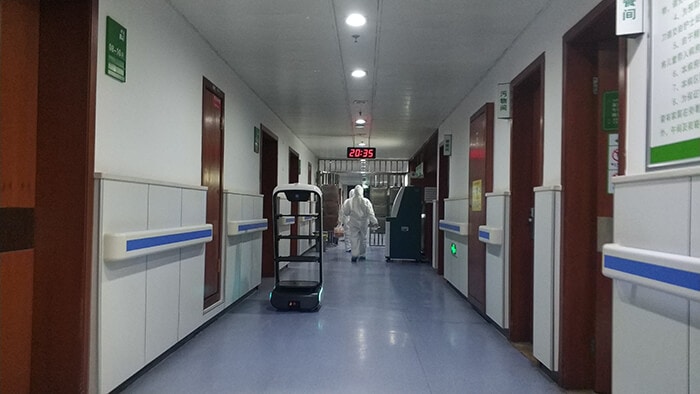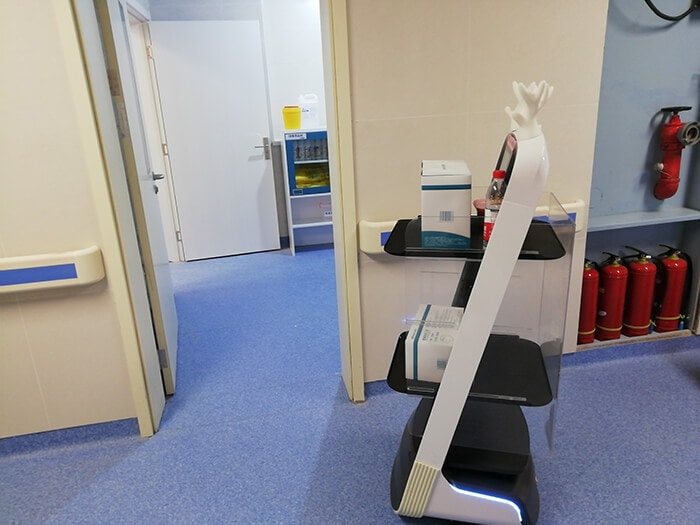
Pudu Robotics and Intel RealSense Technology
When was the last time you visited a restaurant, and looked around in vain for your server to attract their attention? This is a pretty common experience for many people – restaurants get busy, servers have a hard time keeping up with the many different tasks required of them, from taking orders and clearing tables, to delivering food. Shenzen based startup Pudu Technology is working at easing some of the burden servers carry, by providing restaurants with highly automated food delivery robots. The robots are not designed to replace human servers, but rather to make it easier for servers to spend more time with their customers, outside the kitchen.
What is the experience?
The robots have a touchscreen that allows a food expeditor to assign each tray of the robot (they can have up to 4 trays) to a specific table. Once the table is selected, the robot navigates its way through a crowded restaurant to the table, and will then give instructions to the diners to allow them to take their own plates and food items from the trays – for example, telling you that your items are on the 3rd and 4th trays. Once you’ve taken your items from the robot, a simple button press on the touchscreen instructs the robot to continue on its journey, either returning home or going to the next table. Meanwhile, your server has a significant amount of time saved – time that they can now spend with you. By utilizing a robot to assist with a routine and repeatable task, the server can use their time more efficiently on connecting with and serving the needs of their customers.

Closeup of the touchscreen interface.
Technical details
The robots navigate using a proprietary PuduSLAM algorithm which integrates data from multiple sensors; Lidar, vision camera with a sensor pointing directly up, and two Intel® RealSense™ Depth Cameras located in the lower part of the robot. The depth cameras are crucial for avoiding collisions and adapting to a changing environment. In an average restaurant, you can expect chairs and table legs to move, have bags or coats on the floor or placed on the back of chairs or booths, not to mention people moving around the space. Tablecloths can also present challenging problems to 2D cameras, where depth cameras are more able to deal with all of these different factors and problems with ease.
The combination of the upward facing camera, VSLAM calculations and the depth cameras allows the robots to navigate these changing environments. Stand in front of the robot, and it will politely either try to navigate its way past you, or it will ask you very politely to move, as it says “I need to work.” Once the way is clear, it will resume its journey to your table, where your food is delivered hot and fresh.
The future of work
Whenever we talk about robotics, a real concern and fear for many people is losing their jobs to robots. Being replaced by something that can work many more hours a day is a worry for many people. In general, what we see is robots being used in ways that can help people do their jobs more easily or efficiently. Think about the first convenient, electric powered washing machine. In about 1908, these started to be available, and by the 1950s would be ubiquitous in most homes. The washing machine didn’t remove the need for human labor in washing clothes entirely, but it did reduce the amount of time spent on highly physical labor and improved the general performance of the task. Many robots can be viewed similarly, designed to make some jobs easier, less physically demanding.

Pudu deployed in a Hangzhou Hospital, China
In some cases, robots can also be used in places and situations where it would be too dangerous for humans to perform the same task. In the case of the Pudu robots, they have recently been deployed in a number of hospitals and hotels in China where patients are currently in quarantine due to the 2019-nCoV, or coronavirus. By deploying the robots to deliver food or other supplies to quarantined people, human to human contact is limited, which both avoids potential spreading of the disease, and removes people who might normally be performing that task from repeated high-risk encounters. Pudu has provided robots all over China across many affected provinces for this purpose.

Pudu robot in action, Hospital in Huanggang, China
While this is an unusual situation, it is an excellent example of a depth enabled technology improving and supporting lives in new and unique ways every day.
Subscribe here to get blog and news updates.
You may also be interested in
In a three-dimensional world, we still spend much of our time creating and consuming two-dimensional content. Most of the screens
A huge variety of package shapes, sizes, weights and colors pass through today’s e-commerce fulfilment or warehouse distribution centers. Using
Let’s talk about how Intel RealSense computer vision products can enhance your solution.
